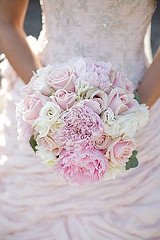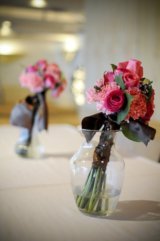Filipino Wedding Customs
In early Filipino wedding customs, the groom-to-be threw his spear at the front steps of his intended’s home, a sign that she has been spoken for. These days, a ring suffices as the symbol of engagement.
The Engagement
After the couple has decided to marry, the first order of business is the pamanhikan, where the groom and his parents visit the bride’s family to ask for her hand in marriage. Wedding plans are often made at this time, including a discussion of the budget and guest list.
Don’t be surprised if the groom-to-be is expected to run some errands or help out around the bride’s house. This tradition is called paninilbihan, where the suitor renders service to his future wife’s family to gain their approval.
The Wedding Outfits
The white wedding dress has become popular in the last hundred years or so with America’s influence in the Philippines. Before that, brides wore their best dress, in a festive color or even stylish black, to celebrate a wedding. Orange blossom bouquets and adornments were a must during the turn of the last century.
For men, the barong tagalog is the traditional Filipino formal wear. It is a cool, almost transparent, embroidered shirt, made from silky pina or jusi, two native ecru fabrics. It is worn untucked, over black pants, with a white t-shirt underneath.
These days, a Filipino American groom might wear the conventional black tux, but Filipino male wedding guests will usually show up in their finest barongs.
The Ceremony
In pre-colonial days, a wedding ceremony lasted three days. On the first day, the bride and groom were brought to the house of a priest or babaylan, who joined their hands over a plate of raw rice and blessed the couple. On the third day, the priest pricked the chests of both bride and groom and drew a little blood. Joining their hands, they declared their love for each other three times. The priest then fed them cooked rice from the same plate and gave them a drink of some of their blood mixed with water. Binding their hands and necks with a cord, he declared them married.
The majority of Filipino weddings are now Catholic weddings, but some native traditions remain. Most have special “sponsors” who act as witnesses to the marriage. The principal sponsors could be godparents, counselors, a favorite uncle and aunt, even a parent. Secondary sponsors handle special parts of the ceremony, such as the candle, cord and veil ceremonies.
Candle sponsors light two candles, which the bride and groom use to light a single candle to symbolize the joining of the two families and to invoke the light of Christ in their married life.
Veil sponsors place a white veil over the bride’s head and the groom’s shoulders, a symbol of two people clothed as one.
Cord sponsors drape the yugal (a decorative silk cord) in a figure-eight shape–to symbolize everlasting fidelity–over the shoulders of the bride and groom.
The groom gives the bride 13 coins or arrhae, blessed by the priest, as a sign of his dedication to his wife’s well-being and the welfare of their future children.
Courtesy of WeddingsAtWork.com
Return from Filipino Wedding Customs to Filipino Wedding Traditions








